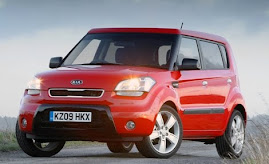The new 7 Series will make its U.S. debut at the Los Angeles Show next month and is expected in American BMW dealers by spring 2009. Only one powertrain, the 400-hp, 450-lb-ft, twin-turbo 4.4L V-8, will be available, in short wheelbase 750i form and the 5.5-in.-longer 750Li, which is expected to comprise the bulk of U.S. sales. This engine not only outpowers the 4.8L V-8 in the outgoing 750Li, it also has more torque than the 6.0L V-12 fitted to the 760Li.
There are no plans to offer the 326-hp, 332-lb-ft, twin-turbo 3.0L straight-six version (badged, somewhat confusingly, 740i in Europe), nor the sensational 245-hp, 398-lb-ft, single-turbo 3.0L straight-six diesel (730d), which with a 0-to-60-mph time of about 7.0 sec is just two seconds slower to 60 mph than the big V-8, yet uses almost 40% less gas on the European combined fuel-consumption test (BMW claims 32.6 mpg). However, BMW officials admit they will monitor the impact of high gas prices and the looming CAFE regulations to assess whether a smaller-engine 7 Series might make sense at some point in the future.
No official word on pricing yet, but the new 7 Series will be more expensive than the outgoing model. Loud hints dropped at the international launch program in Dresden, Germany, suggest prices will start in the low- to mid-$80,000 range.
That's no surprise, perhaps, given the staggering amount of technology crammed into this car. Here's some of it:
Integral Active Steering: Part of the optional Sport Package, this is BMW's own four-wheel-steering system. Like the systems that were all the rage among Japanese manufacturers during the late '80s/early '90s, BMW's four-wheel steer allows the rear wheels to countersteer the fronts at low speeds and turn in the same direction at high speeds. The result is a tighter turning circle at low speeds (by up to 27.6 in.) -- great for parking maneuvers -- and greater stability through high-speed turns, plus increased comfort for rear-seat passengers during fast driving, as the system effectively reduces the car's yaw rate. And here's the 21st-century wrinkle to what was a 20th-century novelty: The Integral Active Steering System will work with the stability-control system when braking on slippery surfaces, automatically intervening to steer the rear wheels to keep the big BMW on the straight and narrow.
Dynamic Damper Control: Standard across the new 7 Series range, dynamic damper control allows drivers to select between comfort, standard, and sport shock rates. Nothing new in that, except BMW's system adjusts the compression and rebound stages on each of the shocks independently of each other. The lift motion on each wheel is monitored by sensors and compared with the signals from the ride-height sensors to detect body movement. This data is then correlated with road speed, and the Dynamic Damper Control setting selected by the driver, and the correct damping force is applied to each wheel. All this happens in 2.5 milliseconds. Does it work? You bet. The system endows the new 7 Series with a remarkably composed ride. In combination with the Active Roll Control, which is also part of the optional Sport Package, the big 750Li skims across a twisting canyon road like a hovercraft.
FlexRay: You won't see this. You won't even know it's there. And that's entirely the point. Developed by a consortium of specialists under BMW guidance, FlexRay is a new high-speed data transmission technology. FlexRay enables data to be transmitted 20 times faster than the usual automotive systems, allowing up to 16 computer control units on the new 7 Series to talk to each other in real time. This is the enabling technology that allows BMW to coordinate the control units for the drivetrain, suspension, damping, steering, and braking, allowing seamless integration and adjustability.
Speed Limit Indicator: A camera mounted behind the windshield near the rearview mirror feeds a signal into software that recognizes speed-limit signs mounted on overhead gantries or at the side of the road. The system then posts the correct speed-limit graphic on the instrument panel, or on the optional four-color head-up display (which is exceptional, by the way -- the best we have ever used, showing not only vehicle speed, but nav instructions). The system compared the data captured by the camera with data stored in the nav system and gives the camera data priority in the event of a new or modified speed limit on a section of road. This brilliant license-saving technology won't be available on U.S.-spec 7 Series models, however, because the system is currently only coded to recognize international-style signs that use graphics rather than words to tell when speed limits begin and end. But BMW insiders hint that a version optimized for U.S. signs is under development. Which makes sense, given the U.S. is the largest single market for the 7 Series, accounting for almost 36% of sales of the previous model. (Number two market? Nope, it's not Germany, but China, with just over 16% of sales, and counting.)
Side View: Part of the optional Camera Package, this idea was borrowed from the Rolls-Royce Phantom. Small camera lenses are mounted on the side of the car, close to the front-wheel opening. They allow the driver to see traffic coming from both directions when easing out of a narrow side street or driveway, and can help with parking.
Driver Assistance Package: This bundles together three cool technologies: Lane Departure Warning, which vibrates the steering wheel if you change lanes without using the turn signals; High Beam Assist, which switches the headlights automatically between high and low beams; and BMW's new Active Blind Spot Detection, which senses vehicles almost 200 ft behind. If a vehicle enters the blind spot, a warning triangle appears in the exterior rearview mirror. If the driver activates the turn signal, the triangle graphic flashes, and the steering wheel vibrates.
Night Vision: Using an infrared camera, the optional Night Vision system scans a range up to 1600 ft ahead of the vehicle over a 24-degree-wide range. Okay, GM and Mercedes-Benz have both done night vision. But the BMW system can figure out what pedestrians by the side of the road are doing: If they're moving parallel to the road, the system senses and displays the presence on the iDrive screen or the head-up display but doesn't warn the driver. If the person is on a path to cross the road, a warning is displayed.
Aluminum Panels: There's nothing particularly new about using aluminum front fenders and hood to reduce mass. But the new 7 Series also features an aluminum roof panel. It saves an impressive 15.4 lb, but more important, saves it from high up in the body shell, helping lower the car's center of gravity. BMW's gone to a lot of trouble to achieve this -- bringing aluminum and steel panels together usually results in galvanic corrosion, and both metals expand and contract at different rates, causing stability issues. The aluminum roof panel is therefore attached to the rest of the body-in-white using a specially developed glue. The new 7 Series also features aluminum doors, saving a further 49 lb. These are the first aluminum doors built in volume by BMW, and the skill of the body engineers in handling this difficult to work metal is evident in the complex, multi-dimensional stamping required to create the scallops behind the door handles that intersect the sharp shoulder line on the body side.
3-D Nav Display: A newly developed and optimized GPS nav system with high-resolution 10.2-in. monitor (this is also the iDrive control display) is standard in the new 7 Series. The nav system offers all the usual features, plus a 3-D map views that enhances guidance through mountainous or hilly country. At smaller scales, the screen will show 3-D representations of actual buildings, useful in urban areas. The new nav screen features beautifully refined graphics, and the revised iDrive system is more intuitive than before, placing a smaller multi-axis controller amid an array of menu buttons that can be differentiated by touch. It's easier all around to use, and it looks better, too. Rear-seat passengers can join in the fun courtesy of the optional Rear Entertainment System, which places 8-in. monitors in each of the front-seat head restraints. The 7 Series comes equipped with a 40GB hard drive, 13 gigs of which are allocated to music storage. The system is iPod and iPhone compatible, and the optional -- there's that word again -- Premium Sound System sounds stellar.
Internet: BMW claims to be the first automaker to allow unrestricted Internet use in a car. Well, almost unrestricted -- the Internet function is an option, and it won't be available on U.S.-spec vehicles. The Internet connection is made on an enhanced GSM mobile phone technology and is accessed via the iDrive. In Internet mode, the rotary controller operates as a mouse, moving the pointer across the screen, and clicking on a link when pushed. It's a bit clunky, as it's difficult to modulate the iDrive controller precisely. Even more clunky, though, is typing in a URL or a Google search term on screen -- you're taken to a rotary speller similar to that used to punch in an address into the nav system. The Internet function, like the TV function, is disabled while the car is moving, unless you have the rear-seat entertainment system, in which case your passengers will be able to surf away to their hearts' content.
It's an extraordinary piece of work, the new 7 Series. Almost everything -- from dynamic chassis and drivetrain systems to the on-board entertainment and communications functionality -- can be adjusted, set, or configured exactly the way you want it. Even the air vents can be set to provide your choice of direct or diffuse airflow. It's probably just as well the entire owners' manual is contained on the 7 Series' hard drive, where it can be accessed via a few clicks and spins of the iDrive controller. Judging by the press kit, it would be way too big to fit in the glovebox.
-MOTORTREND.COM















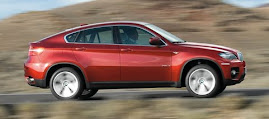
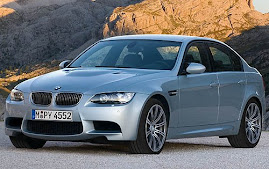




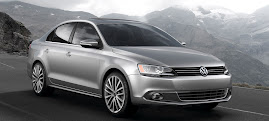

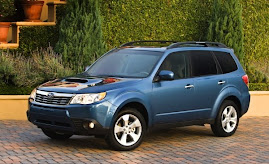
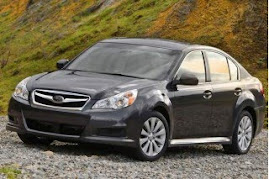

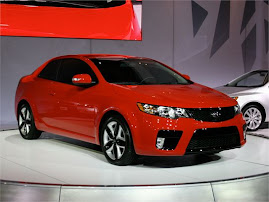_(544x408).jpg)
